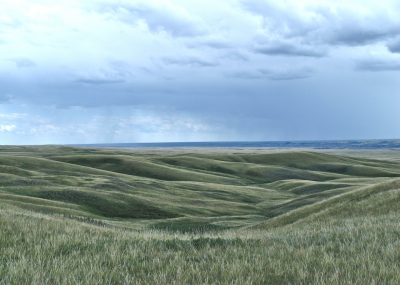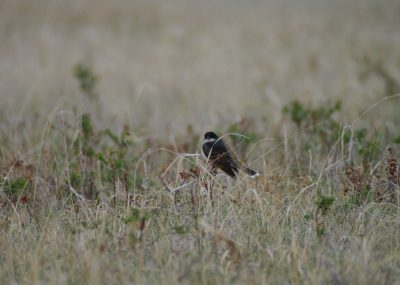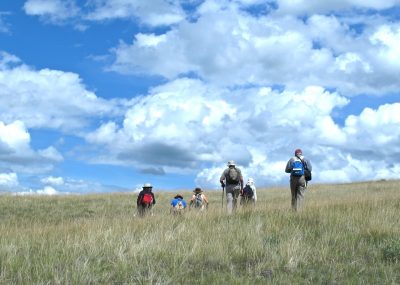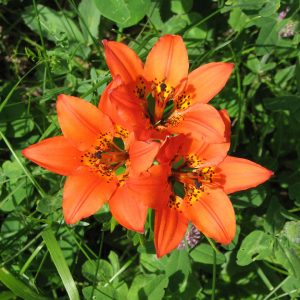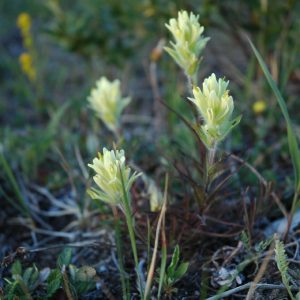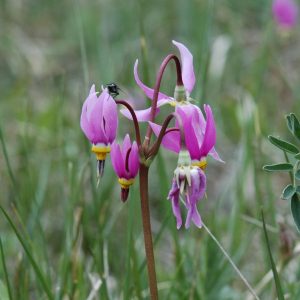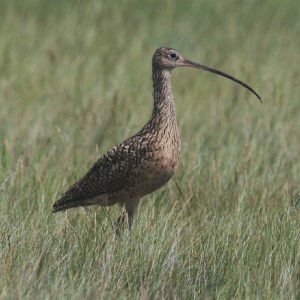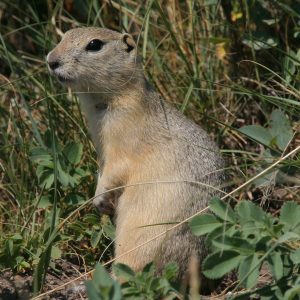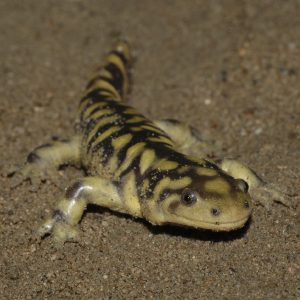 |
 |
AWA’s Hand Hills Area of Concern boasts lush fescue grasslands, an increasingly rare sight on the Canadian Plains. Photo © T. Barratt |
AWA’s Hand Hills Area of Concern is an area of Northern Fescue Grasslands, lakes and wetlands, southeast of the town of Drumheller. The area is the largest remaining stretch of Northern Fescue in the world and holds significant habitat for migrating waterfowl and shorebirds, and numerous rare or uncommon plant species.
Status
There are two protected areas within the Hand Hills area: Hand Hills Ecological Reserve (22 km2), and Little Fish Lake Provincial Park (1.1 km2). These protected areas cover only 7.2% of AWA’s Hand Hills Area of Concern, a relatively small proportion of the total area. Little Fish Lake is found within an Important Bird Area (IBA), and although Little Fish Lake Provincial Park has been established, the lake itself and its shoreline remain unprotected.
The remaining area within the Hand Hills consists of a patchwork of public lands and private property.
Management
Hand Hills Ecological Reserve is managed under the Hand Hills Ecological Reserve Management Plan, published in 1997, which falls under the purview of Alberta’s Wilderness Areas, Ecological Reserves, Natural Areas and Heritage Rangelands Act.
Public lands within the Hand Hills are classified under Alberta’s White Area, which are part of Alberta’s agricultural landscape. In addition to agricultural developments, public lands within the White Area are also managed for water, wildlife habitat, resource extraction and recreation. Relevant legislation for managing and administering public lands includes: the Public Lands Act and the South Saskatchewan Regional Plan.
Area
AWA’s Hand Hills Area of Concern is an area of Northern Fescue Grasslands, lakes and wetlands, southeast of the town of Drumheller. The area is the largest remaining stretch of Northern Fescue in the world and holds significant habitat for migrating waterfowl and shorebirds.

AWA’s Hand Hills Area of Concern. MAP © AWA FILES: JPG | PDF
Watershed
AWA’s Hand Hills Area of Concern sits within the Red Deer River watershed, draining locally into Willow Creek and found within the larger South Saskatchewan River basin. Little Fish Lake is the only permanent waterbody within the area, found to the southeastern corner of the Hand Hills. Alkaline seepage springs can be found in parts of the Hand Hills Ecological Reserve. Seasonally, wet sloughs, moist meadows and ephemeral streams will surface in the poorly drained, low-lying sites of the Ecological Reserve.
Geology
The geology of the area is characterized by that of the gently undulating Hand Hills, although there are a number of incised valleys and steep-sided coulees. The area surrounding Little Fish Lake is capped by a remnant of a Tertiary plateau that sits 146 m higher than the surrounding landscape, a result of the cap preventing the plateau from being eroded by glacial activity. The badlands in the surrounding area are composed of Cretaceous sandstones, siltstones and shale.
Environmentally Significant Areas
Many patches within AWA’s Hand Hills Area of Concern are considered as nationally environmentally significant areas. These areas draw their significance the extensive Northern Fescue plains, significant habitat for migrating waterfowl and shorebirds, and numerous rare and uncommon plant species.

Hand Hills ESAs. MAP © AWA FILES: JPG | PDF
Natural Regions
AWA’s Hand Hills Area of Concern falls within the Grasslands Natural Region of Alberta, including the Northern Fescue and Dry Mixedgrass Natural Subregions. The Hand Hills contain one of the largest remaining stretches of Northern Fescue Grassland in the world.

Hand Hills Natural Regions. MAP © AWA FILES: JPG | PDF
Vegetation
More than 250 species of vascular plant have been recorded within the Hand Hills area. While rough fescue is a dominant species in the Hand Hills, the area is also known for its massive wood lily blooms, aspen groves and seepage spring communities.
Plant communities include mixed grasslands (porcupine grass, spear grass, june grass, northern wheatgrass, blue grama grass, green needlegreass and western wheatgrass), badlands type vegetation (sagebrush, salt sage, long-leaved sage, broomweed), low thickets of wild rose and buckbrush, thickets of mixed tall shrubs (Bebb willow, Saskatoon, red osier dogwood, chokecherry) and dense stands of silverberry.
Rare species include crowfoot violet, few-flowered rush, yellow evening primrose, mountain shooting star and yellow paintbrush.
Western wood lily. Photo © N. Douglas
Yellow paintbrush. Photo © C. Wearmouth
Mountain shooting star. Photo © C. Wearmouth
Wildlife
AWA’s Hand Hills Area of Concern has important habitat for over 130 bird species, including piping plover, ferruginous hawk, burrowing owl, Baird’s sparrow, Sprague’s pipit, loggerhead Shrike, upland sandpiper, long-billed curlew, American white pelican and abundant nesting geese. Harlequin Ducks and Sabine’s gull both been sighted at Little Fish Lake, and Townsend’s solitaires have been observed in the Hand Hills as well as two leks for sharp-tailed grouse.
The uplands of Hand Hills have high densities of Richardson’s ground squirrel. Other mammals frequenting the area include thirteen-lined ground squirrel, prairie long-tailed weasel, white tailed jack rabbit and American badger.
A number of reptiles and amphibians also reside in Hand Hills including tiger salamander, Canadian toad, Boreal chorus frog, Northern leopard frog, wandering garter snake, and western plains garter snake.
Long-billed curlew. Photo © C. Wallis
Richardson’s ground squirrel. Photo © C. Wallis
Tiger salamander. Photo © A. Teucher
Culture
Indigenous Peoples have used the area for approximately 10,000 years, since the retreat of the glaciers. Evidence of tipi rings has been documented within the area that is now the Hand Hills Ecological Reserve. The Hand Hills fall within the traditional territories of the peoples of Treaty 7, including the Siksika (Blackfoot), Kainai (Blood), Piikani (Peigan), Iyarhe Nakoda (Stoney), and Tsuut’ina (Sarcee).
Activities
As an Important Bird Area (IBA), Little Fish Lake offers a unique opportunity for birders to observe uncommon species of nesting and feeding shorebirds and waterfowl. In addition to this, Little Fish Lake Provincial Park offers unserviced camping, canoeing and kayaking.
2012
In December, Suncor submits a proposal to develop a 80 MW wind power project in Hand Hills, near the village of Delia. The construction of 17 wind towers is conditionally approved.
1999
AWA requests that the World Heritage Committee consider eight sites in Alberta for the World Heritage Site designation, one of which is Little Fish Lake.
1991
Fencing is installed surrounding Little Fish Lake to prevent cattle from eroding the lake’s shores. The shoreline of Little Fish Lake provides important sandy nesting habitat for Piping Plover, a species federally-listed as Endangered.
1988
A significant portion of the Hand Hills is protected as an Ecological Reserve; however, grazing persists, causing damage to the sensitive sites surrounding Little Fish Lake.
1984
The land surrounding Little Fish Lake is split into five different leases and auctioned to private landowners. Splitting the area greatly deteriorated its natural habitats.
1980s
A steady increase in grazing leads to damage of rough fescue in the Hand Hills, dwindling populations of rare birds and wildflowers.

